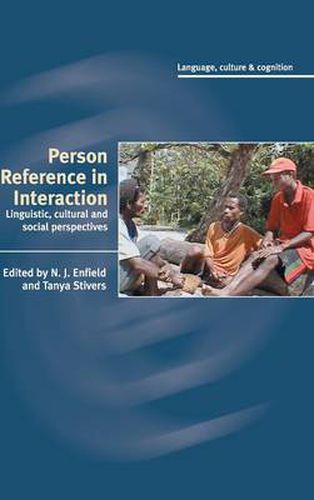Readings Newsletter
Become a Readings Member to make your shopping experience even easier.
Sign in or sign up for free!
You’re not far away from qualifying for FREE standard shipping within Australia
You’ve qualified for FREE standard shipping within Australia
The cart is loading…






How do we refer to people in everyday conversation? No matter the language or culture, we must choose from a range of options: full name (‘Robert Smith’), reduced name (‘Bob’), description (‘tall guy’), kin term (‘my son’) etc. Our choices reflect how we know that person in context, and allow us to take a particular perspective on them. This book brings together a team of leading linguists, sociologists and anthropologists to show that there is more to person reference than meets the eye. Drawing on video-recorded, everyday interactions in nine languages, it examines the fascinating ways in which we exploit person reference for social and cultural purposes, and reveals the underlying principles of person reference across cultures from the Americas to Asia to the South Pacific. Combining rich ethnographic detail with cross-linguistic generalizations, it will be welcomed by researchers and graduate students interested in the relationship between language and culture.
$9.00 standard shipping within Australia
FREE standard shipping within Australia for orders over $100.00
Express & International shipping calculated at checkout
How do we refer to people in everyday conversation? No matter the language or culture, we must choose from a range of options: full name (‘Robert Smith’), reduced name (‘Bob’), description (‘tall guy’), kin term (‘my son’) etc. Our choices reflect how we know that person in context, and allow us to take a particular perspective on them. This book brings together a team of leading linguists, sociologists and anthropologists to show that there is more to person reference than meets the eye. Drawing on video-recorded, everyday interactions in nine languages, it examines the fascinating ways in which we exploit person reference for social and cultural purposes, and reveals the underlying principles of person reference across cultures from the Americas to Asia to the South Pacific. Combining rich ethnographic detail with cross-linguistic generalizations, it will be welcomed by researchers and graduate students interested in the relationship between language and culture.